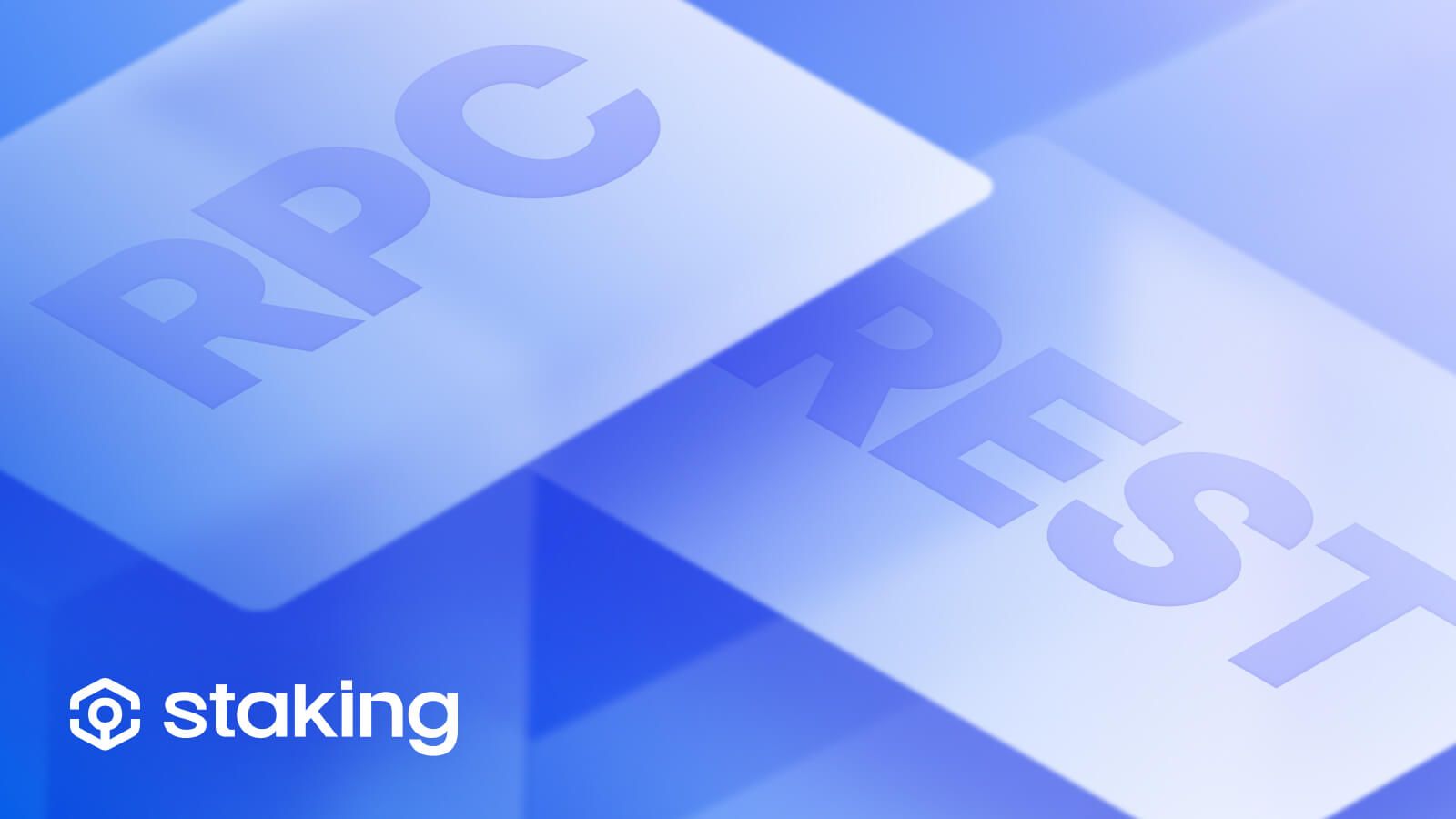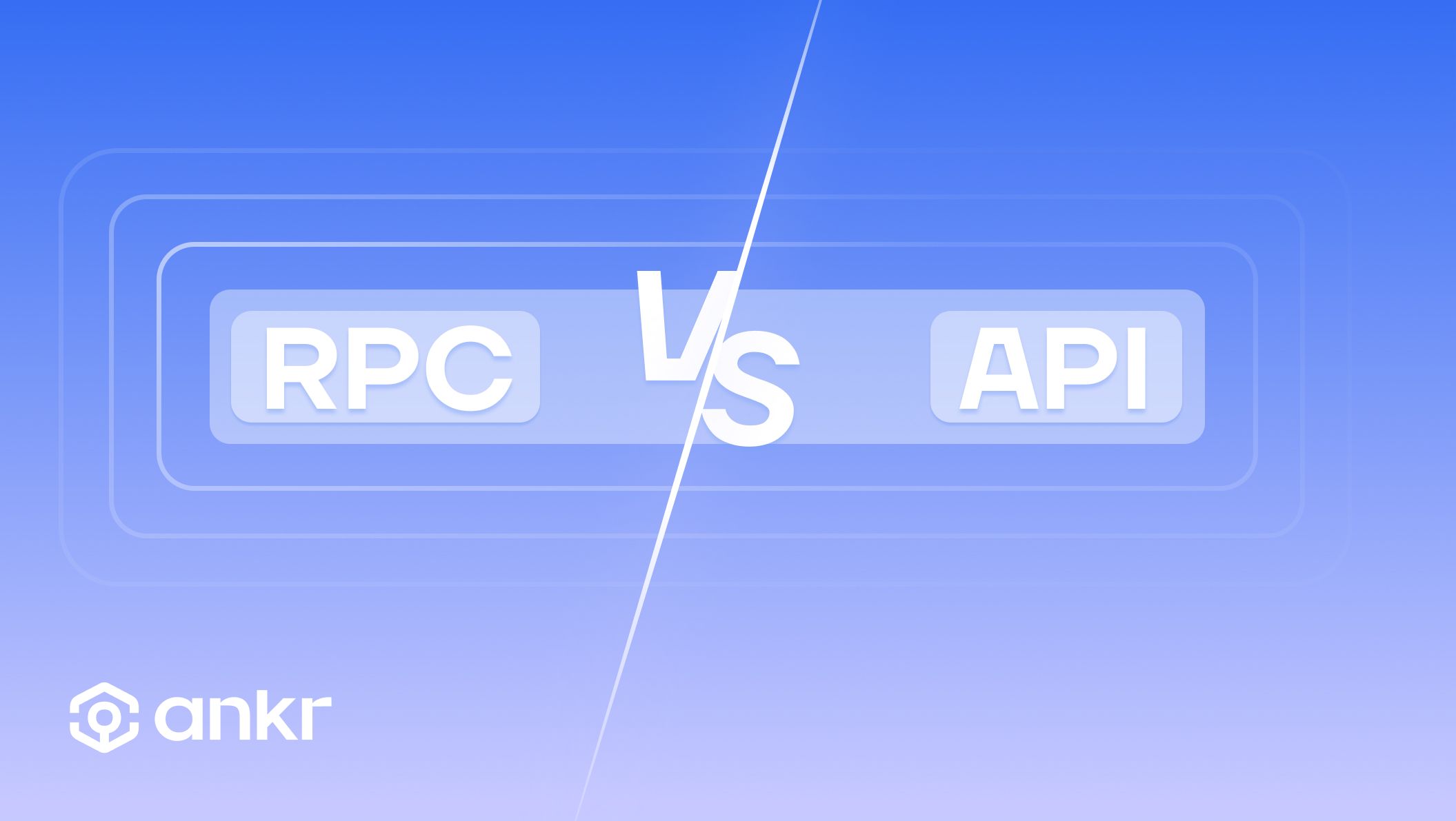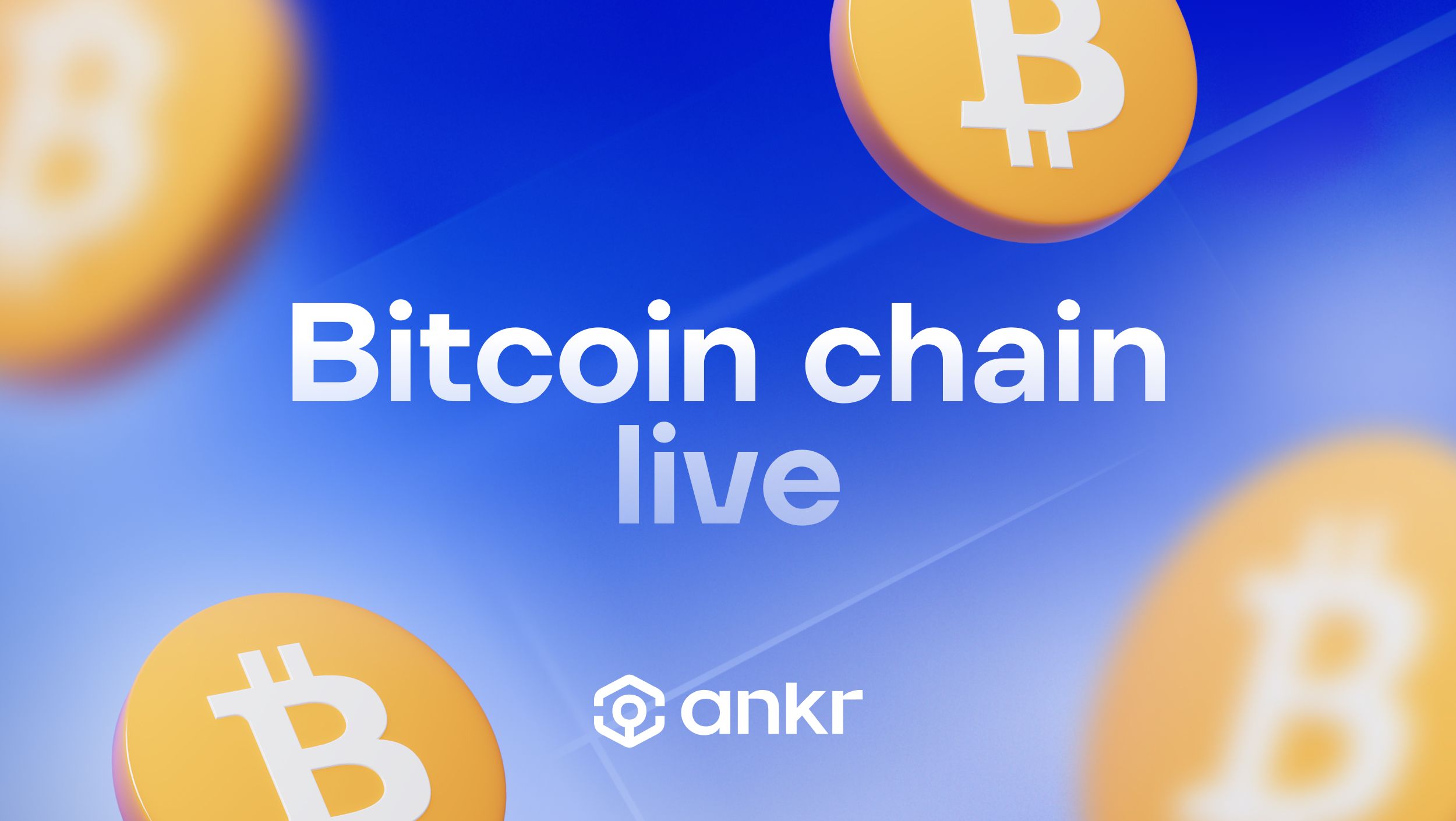A Deep Analysis: RPC vs REST in Blockchain Infrastructure

April 3, 2024
5 min read

As blockchain technology continues to evolve, developers are faced with numerous architectural decisions, one of the most crucial being the choice between Remote Procedure Call (RPC) and Representational State Transfer (REST) for facilitating communication within their blockchain infrastructure. In this comprehensive analysis, we delve into the intricacies of RPC vs REST in the context of blockchain development, examining their main differences, performance evaluations, compatibility challenges, security implications, and real-world use cases.
RPC vs REST Main Differences
RPC and REST are two distinct communication protocols commonly used in blockchain infrastructure. RPC, as the name suggests, enables a client to invoke procedures or functions on a remote server. On the other hand, REST, which stands for Representational State Transfer, relies on stateless communication via standard HTTP methods such as GET, POST, PUT, and DELETE.
While RPC typically employs a more procedural approach, REST follows a more resource-oriented architecture. RPC tends to be more tightly coupled, with direct function calls, whereas REST emphasizes loose coupling and scalability through its uniform interface.
- RPC: Enables remote execution of functions on a server.
- REST: Relies on stateless communication via standard HTTP methods.
A Brief Explanation of Communication Protocols in Blockchain
In blockchain networks, communication protocols play a critical role in enabling nodes to interact with each other. These protocols dictate how information is transmitted, validated, and processed within the network. Common communication protocols include TCP/IP, HTTP, WebSocket, and, pertinent to our discussion, RPC and REST.
TCP/IP (Transmission Control Protocol/Internet Protocol) forms the backbone of internet communication, providing reliable and ordered delivery of data packets. HTTP (Hypertext Transfer Protocol) is built on top of TCP/IP and is widely used for web-based communication. WebSocket enables bidirectional communication channels over a single TCP connection, facilitating real-time data exchange. RPC and REST, while both utilizing HTTP as the underlying transport protocol, differ in their architectural principles and communication patterns.
A Deep Dive into How Remote Procedure Calls (RPCs) Work
RPC, a protocol that allows a program to execute code on a remote system as if it were local, plays a significant role in blockchain infrastructure. It enables nodes to communicate and invoke methods or procedures on a remote server, facilitating seamless interaction within the network. JSON-RPC (JavaScript Object Notation Remote Procedure Call) is a popular implementation of RPC in blockchain systems, leveraging JSON for data serialization and HTTP for transport.
In the context of blockchain development, RPC is commonly used for tasks such as querying blockchain data, submitting transactions, and managing network nodes. Developers can leverage RPC libraries and APIs to interact with blockchain nodes programmatically, enabling automation and integration with external systems.
- JSON-RPC: Popular implementation leveraging JSON for data serialization and HTTP for transport.
REST in the Blockchain Era: A Framework Overview
REST, characterized by its stateless communication model and resource-oriented architecture, has gained prominence in blockchain development due to its simplicity and scalability. In a RESTful blockchain infrastructure, resources such as blocks, transactions, and smart contracts are exposed via uniform resource identifiers (URIs), and interactions are performed using standard HTTP methods.
REST APIs provide a standardized way for clients to access and manipulate blockchain data, making it easier to develop decentralized applications (dApps) and integrate blockchain functionality into existing systems. RESTful architectures promote modularity, interoperability, and flexibility, enabling seamless communication between disparate components within the blockchain ecosystem.
- Resource-Oriented Architecture: Resources exposed via URIs, interactions via standard HTTP methods.
RPC vs REST in Blockchain
When evaluating RPC vs REST in the context of blockchain development, it's essential to consider various factors such as performance, compatibility, security, and developer experience. While RPC offers direct method invocation and efficient data serialization through protocols like JSON-RPC, REST provides a more standardized and scalable approach to building decentralized applications.
Performance Evaluation of RPC and REST in Blockchain
Performance is a crucial consideration in blockchain infrastructure, where every transaction must be processed and validated efficiently. When comparing the performance of RPC and REST in blockchain environments, factors such as latency, throughput, and resource utilization come into play. RPC's more direct communication model may offer lower latency and higher throughput for certain use cases, particularly those involving frequent method calls or real-time interactions.
Compatibility Challenges: Language and Protocol Support in RPC and REST
Compatibility challenges can arise when integrating blockchain infrastructure with existing systems or across different programming languages. RPC (Remote Procedure Call) implementations may vary in language support and protocol compatibility, requiring developers to choose libraries or frameworks that align with their specific requirements. REST, with its standardized HTTP-based interface, offers broader compatibility and interoperability across diverse platforms and languages, making it a preferred choice for building decentralized applications with multi-language support.
RPC vs REST: Comparison Between Protocol Security
Security is paramount in blockchain infrastructure, where sensitive data and assets are managed and transferred. When comparing the security implications of RPC and REST, it's essential to consider factors such as authentication, authorization, encryption, and data integrity. RPC implementations may rely on authentication mechanisms such as basic access authentication or API keys, whereas RESTful architectures often utilize token-based authentication schemes such as OAuth.
- Performance Evaluation: Consider latency, throughput, and resource utilization.
Choosing Between RPC and REST for Blockchain Development
Choosing between RPC and REST for blockchain development ultimately depends on the specific requirements and constraints of the project. RPC may be preferred for applications requiring low latency, real-time interactions, or tight integration with existing systems. REST, on the other hand, offers a more standardized and scalable approach, making it suitable for building decentralized applications with broad compatibility and interoperability.
- RPC for Blockchain Development: Preferable for low-latency, real-time interactions or tight system integration.
- REST for Blockchain Development: Suitable for standardized, scalable applications with broad compatibility.
Real cases using RPC and REST API
Several real-world use cases demonstrate the practical applications of RPC and REST in blockchain infrastructure. For example, cryptocurrency wallets often utilize RPC APIs to interact with blockchain nodes for querying balances, sending transactions, and managing addresses. Decentralized exchanges (DEXs) may employ RESTful APIs to enable trading, liquidity provision, and market data retrieval across multiple blockchain networks.
Final Thoughts On RPC vs Rest
In summary, the choice between RPC and REST in blockchain development involves trade-offs between performance, compatibility, security, and developer experience. While RPC offers direct method invocation and efficient data serialization, REST provides a standardized and scalable approach to building decentralized applications. Developers should carefully evaluate their project requirements and constraints to determine the most suitable communication protocol for their blockchain infrastructure.
Join the Conversation on Ankr’s Channels!
Twitter | Telegram Announcements | Telegram English Chat | Help Desk | Discord | YouTube | LinkedIn | Instagram | Ankr Staking







![What Are RPC Nodes and Endpoints? The Complete Guide [2024]](https://s3-frontend-strapi.s3.us-west-1.amazonaws.com/rpc_node_a4828fc7d2.jpg)
